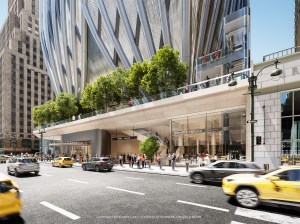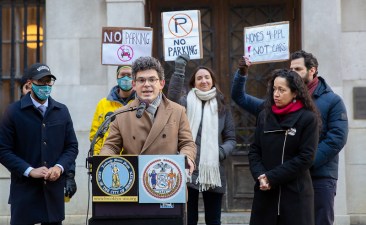Where the Sidewalk Ends: Dubai

A few of us from Project for Public Spaces were recently in Dubai to train a group of the city’s leading real estate developers in Placemaking. The largest city in the United Arab Emirates, Dubai has experienced explosive growth in recent years, emerging as the region’s financial and cultural capital.
The real estate development boom currently underway in Dubai almost makes New York City look like a sleepy ghost town. Combined, the group of developers we met are launching or planning tens of billions of dollars in new projects over the next few years. Despite many iconic, ambitious and, perhaps, visionary developments, the modern part of the city has almost no successful public spaces. As is usually the case, the major limiting factor was the city’s nearly total automobile dependence. Not surprisingly, the rapid changes are setting a course that will force Dubai to confront many difficult transportation and development policy decisions in the coming years.

Dubai’s transportation system depends almost entirely on the ever-widening Sheikh Zayed Road. The city lacks the smaller, more distributed and diverse destinations of a more organically developed city. With limited destinations scattered up and down this road there is little possibility for walking or bicycling (Neighborhing Qatar is building a network of mist-cooled bike lanes). Mass transit is planned and the current burst of development is creating density but nothing is being designed to be transit- or pedestrian-compatible.

Photo Credit: Asghar Khan/Gulf News
Like all undiversified systems, the transportation system of Dubai is susceptible to overshoot and collapse. With a rapidly growing population of 1.1 million, nearly 1.8 million daily car trips are made on Dubai roads, of which 800,000 trips are on the highways. Despite these conditions, the Gulf News recently reported optimistically that "Dubai Traffic Will Be Smooth Within Three Years."

We were told that 25 percent of the world’s cranes are in Dubai.

The economy seems to have been driven by construction and the mere momentum of growth with a concentration on high rise, luxury condominiums. Notice, even with all of this construction, there are no trucks allowed during the morning rush hour.

Soon to be the world’s tallest building, Burj Dubai is estimated to top off at 190 floors, but they will not disclose the final height. The Burj Al Arab, the city’s most iconic building, is described as a "7 star hotel" and together with the surrounding malls and resorts, it is the city’s primary tourist attraction. The city cannot go much further to impress the world with resorts or starchitectural monuments.

The most popular "alternative" form of transportation has perhaps an even larger ecological footprint, at the world’s largest indoor downhill ski slope located at the Mall of the Emirates. Apparently, they are about to build another, even larger, indoor ski slope. When the snow finishes melting off the Alps we’ll still have these.

All this was in sharp contrast to Copenhagen where we had spent the previous few days at the Public Spaces Public Life conference (with world famous blogger Aaron Naparstek. Editor’s note: This is your best post ever, Ethan. –AN). Certainly, the stories we learned of Scandinavia overcoming the "bad weather excuse" and creating a walking and public space culture on "shoulder seasons" were relevant to Dubai.

As with most globally oriented cities, Dubai contains a hidden city within. We did not get to see the vast camps of immigrants brought in to do construction. The vibrant Deira section was not listed on the maps given to us at our upscale Bur Dubai Hotel, but this "poorer" part of the city is where one finds the only successful public spaces. Mostly car free, Deira is a maze of souks, pedestrian streets, small squares, markets and mosques.

Peering into a Mosque where Muslim men from all over the world worship.
Dubai and New York make for an interesting comparison. While completely different in many ways, in both Dubai and New York, recent development and real estate booms have been led by luxury housing and have largely ignored public amenities, livable streets and culturally dynamic and diverse public spaces. Both cities now seem to be playing catch-up for the lack of planning.
New York and Dubai have achieved great success by their own standards but are also at critical junctures. Transportation seems to be the major obstacle and limiting factor in both cities. Both cities are finding that the inefficiency of a surface transportation system built around the private automobile creates severe limitations. Both cities need to stop planning for cars and start planning for destinations that actually build and reflect local culture. Dubai and New York may be two of the world’s most rapidly growing cities, but the long term sustainability and competitiveness of both will be determined by their ability to wean themselves off the automobile and create highly functional destinations at every scale.
For more on how this can happen in NYC (with relevance to many large cities), see Project for Public Spaces’ recently released Nine Ways to Transform NYC into a City of Great Places.

